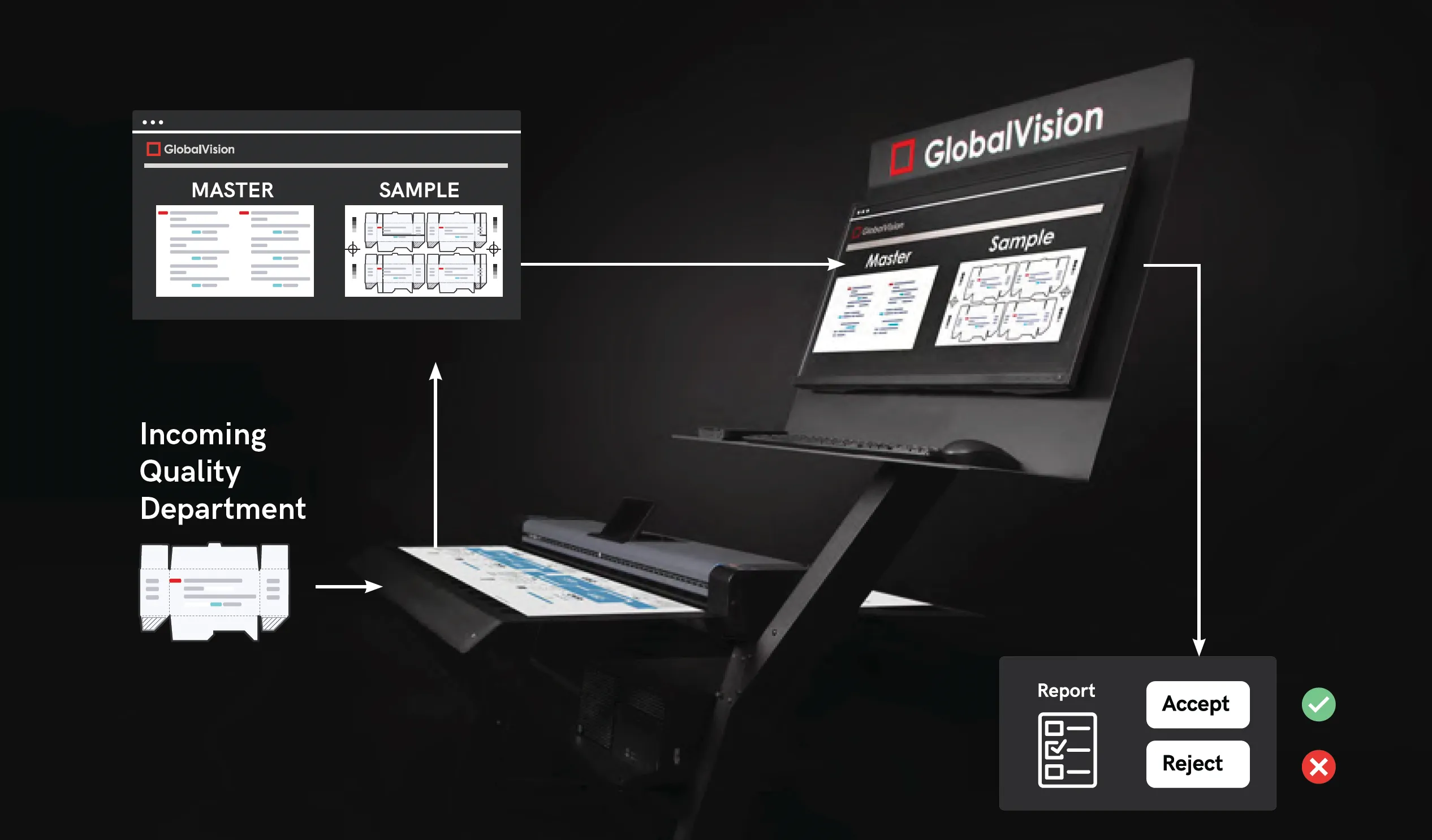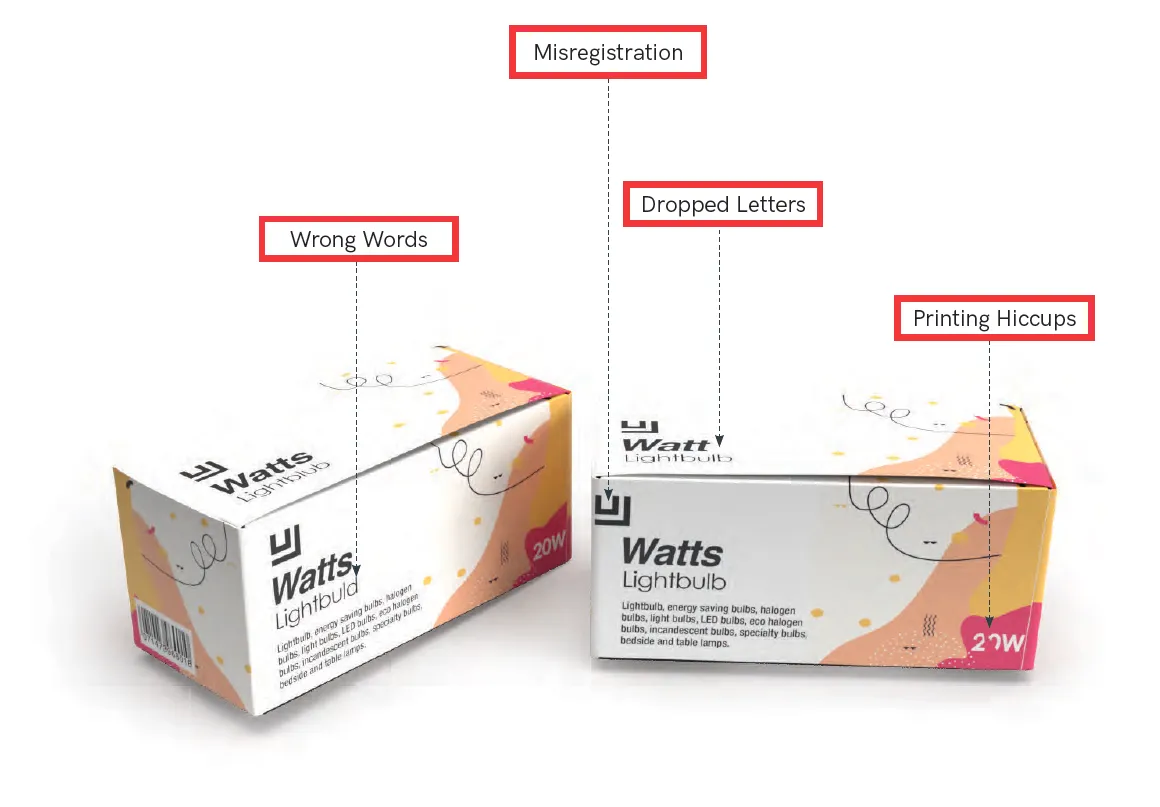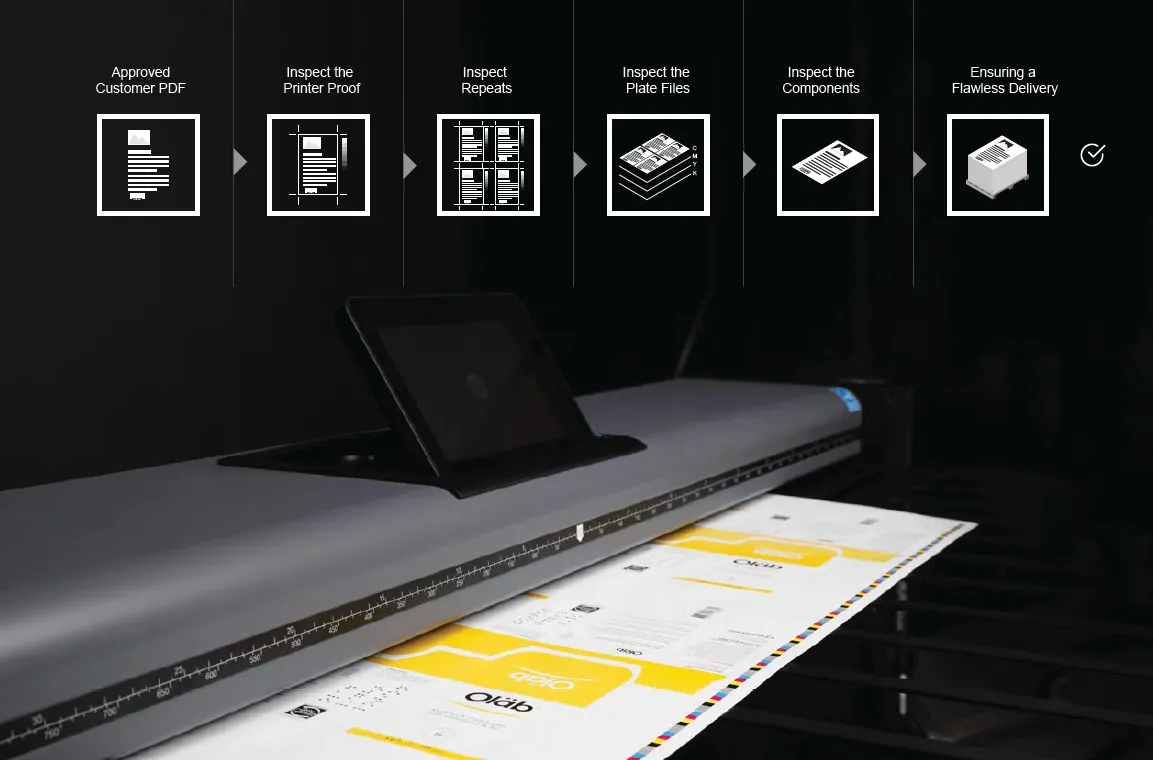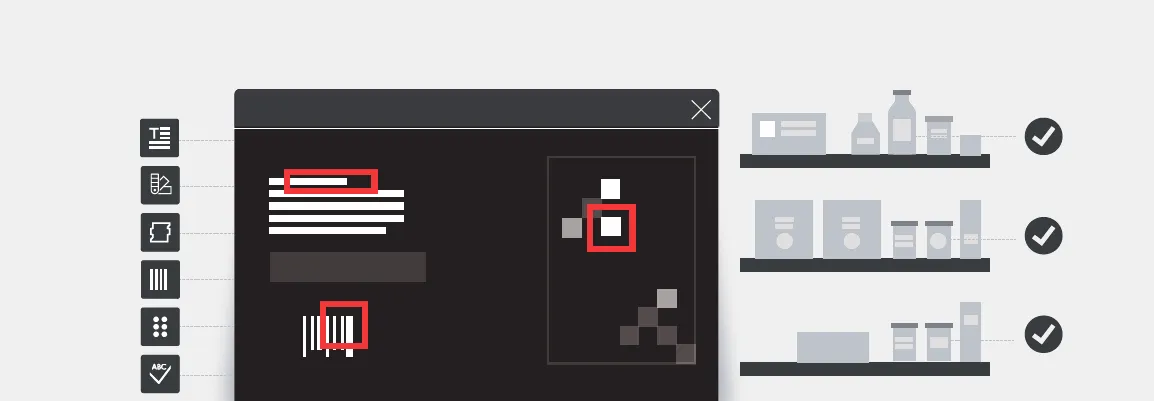How Automated Quality Control Helps Printers Secure Customers

Introduction
In a time where consumers can easily switch between brands, brand integrity should not be overlooked. As packaging is a key component in protecting and maintaining a brand’s image, many printers are turning towards more advanced quality control methods.
This comprehensive guide from GlobalVision discusses the role of printers in ensuring brand integrity, and how they can gain a competitive advantage when it comes to acquiring customers by switching to automated proofreading.

The importance of brand integrity
Brand integrity is how consumers perceive a company’s image, products, and reputation. When a brand loses its integrity, its meaning and value to consumers diminishes. With the majority of consumer brands outsourcing their printing needs, the demand for high-quality labels and packaging has increased. High demand means brands are expanding their requirements when it comes to selecting a printer for their jobs. In turn, printers must ensure that they meet these demands to fully satisfy and protect the brand’s image. Many are making the switch to digital proofreading to improve the efficiency of their quality control process while eliminating manual checks.
Modules

How does packaging affect brand integrity?
The development and protection of a customer’s brand are critical. To maintain this, companies must ensure consistency and reliability across all aspects of their organization, notably their packaging.
Since packaging serves as a visual representation of a brand, both the customer and printer should share the responsibility of protecting it. Excellent packaging and print quality enhances the shelf impact of the product, however, one small error can instantly destroy a brand’s reputation. Just think of the last time you saw a mistake on a package you picked up. It can be hard to trust a company that cannot get their packaging right. Common defects include dropped letters, misregistration, wrong words, and printing hiccups. Even the slightest of these errors could have detrimental effects on both the printer and the brand’s image, not to mention financial implications for both parties.

So how exactly are companies selecting the right printer for the job?
Aside from the obvious requirements like cost and turnaround time, many companies look for the added assurance that extensive quality checks are being conducted in the production facility. With today’s modern technology, relying on the human eye to catch discrepancies between the approved and sample files is not enough. As one printer put it, “there are so many problems that can impede getting 100% accuracy with human-only proofreading”.
Of course, printers have their own set of challenges when it comes to completing high-quality print jobs. The files received from the customer are often a mess, and communication can be difficult. This usually results in longer completion time for the project. Getting the final approval can also be time-consuming and occasionally requires the customer to travel to the printing facility. Additionally, an efficient quality assurance process is expected to be in place to ensure the accuracy of printed materials. For the customer, this means that comparisons between the approved master file and digital or printed samples are being conducted at every stage in the printing process.

Increasing customer acquisition with automation
Proofreaders are facing increasing pressure to detect every difference between the customer-approved file and sample files. Relying on the human eye to catch these differences is strenuous, time-consuming, and can lead to errors slipping by. With high-quality packaging more important than ever, many printers are turning to automated quality control to catch errors before they end up on store shelves. This extra layer of security gives printers an advantage when it comes to acquiring and maintaining customers. Many printers agree that having a proofreading system serves as a unique selling point for their company by saving clients from costly errors.
“[Automated proofreading] gives clients 100% of what they want every time - which is to prevent errors from happening. It’s a proactive approach to quality versus a reactive approach to quality”
- Josh Jenks, Technical Sales Director, Target Label.
With digital proofreading, printers provide the added assurance that jobs will be done right the first time by eliminating the risk of errors appearing on in-store packaging. Printers who have automated their quality control process have stated that having a revision system in place has helped them secure customers just by having it visible on the production floor. The customers appreciate the extra sense of security in knowing that their labels and packaging are accurate, potentially saving them from a costly and detrimental recall. For the printer, even one missed error can cost them a customer especially if the error goes public or ends up costing the customer a lot of money. This can have severe consequences on the printer as many of them are supported by only a few large customers.
“With [digital proofreading], we finished the year with onlya small number of bags returned by our customer. This was our best performance since the plant opened.”
- Greg Williams, Regional Continuous Improvement Manager, Sealed Air Corp.
Eliminating manual revisions also improves efficiency and reduces project completion time, allowing the brand’s product to get to market faster. Additionally, GlobalVision allows printers to send inspection reports to customers, reducing travel, costs, and time spent waiting for the final approval. These inspection reports serve as a snapshot of the comparison between the approved and sample files, allowing the customer to see that the printed job does not have any defects. The printer can also annotate specific areas of the printed sample and send it back to the customer for revision.

The takeaway
The risk of letting a label or packaging error slip by is simply too high nowadays. With constant pressure on brands to protect their image and reputation, choosing a printer who can ensure 100% quality is crucial. Customers also want to make sure that their printer will not make mistakes that put the brand at risk to regulators who spot errors, as this could cause a full recall. If printers want to print for regulated customers, they must prove that they can print error-free.
Fortunately for printers, conducting quality checks with a proofreading system like GlobalVision gives them a competitive advantage over others who are only relying on manual revisions.
Heading 1
Heading 2
Heading 3
Heading 4
Heading 5
Heading 6
Lorem ipsum dolor sit amet, consectetur adipiscing elit, sed do eiusmod tempor incididunt ut labore et dolore magna aliqua. Ut enim ad minim veniam, quis nostrud exercitation ullamco laboris nisi ut aliquip ex ea commodo consequat. Duis aute irure dolor in reprehenderit in voluptate velit esse cillum dolore eu fugiat nulla pariatur.
Block quote
Ordered list
- Item 1
- Item 2
- Item 3
Unordered list
- Item A
- Item B
- Item C
Bold text
Emphasis
Superscript
Subscript


